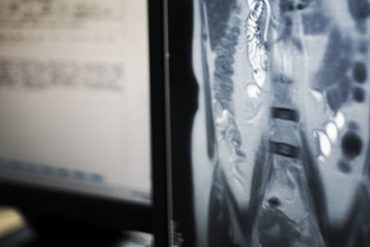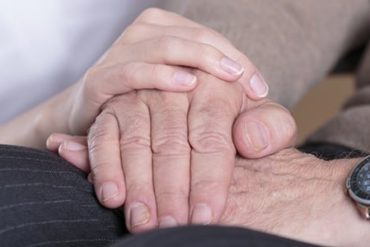IGT involves the body becoming less sensitive to the effects of insulin. Therefore, the body has to work harder to manage blood glucose levels. An individual with IGT has blood sugar (glucose) levels higher than normal, however, not high enough to have diabetes. As with type 2 diabetes, the body generates the insulin, yet there is less of it or it may not be working as it should be.
Those with IGT are at a greater risk of type 2 diabetes. In addition, they are also 50% more likely to have high cholesterol and high blood pressure levels, contributory factors for developing strokes and heart disease.
Is Insulin Resistance the Same as IGT?
No. Insulin resistance is not the same as IGT. Insulin resistance happens when the body ceases to respond as well to insulin. In order to compensate, the body generates more insulin. However, due to the body not responding as well to insulin, the higher insulin levels are unable to control blood glucose as well. As insulin resistance heightens, diabetes eventually results.
Who is Prone to Developing IGT?
Obese or extremely overweight people are at risk of developing IGT, particularly individuals with extra weight around their middle. Excess body fat lowers the effects of insulin. After weight loss, glucose levels are likely to return to normal levels. However, due to less resistance to insulin, more glucose is taken from the blood into tissue cells. Weight loss also lowers the risk of getting type 2 diabetes.
You are at greater risk of developing type 2 diabetes and IGT should you be physically inactive, be genetically pre-disposed to it, have gestational diabetes (diabetes when pregnant) or gave birth to a 9 pounds plus baby.
What are IGT Signs and Symptoms?
Those with IGT rarely have symptoms. In actuality, there are millions of people with diabetes. However, they don’t know that is the case as symptoms develop very slowly. Diabetes symptoms including:
- Blurred vision
- Urinating often
- Constant fatigue
- Constant thirst
- Regular infections
- Pins and needles or numbness in hands and feet
- Frequent infections
How Does IGT Get Diagnosed?
Diagnosis of IGT is undertaken via the oral glucose tolerance test. An individual’s blood sugar level is measured before fasting for between 8-12 hours and 2 hours after drinking a glucose solution.
- Those with normal tolerance have a blood glucose level below 7.8 mmol/L (140 mg/dL) 2 hours after drinking the glucose-containing solution.
- Those with impaired glucose tolerance have a blood glucose level between 7.8 mmol/L (140 mg/dL) and 11.0 mmol/L (199 mg/dL) after 2 hours.
- Those with 2-hour fasting glucose levels 11.1 mmol/L (200 mg/dL) or higher could have diabetes.
How Often Ought I To Be Tested?
Should your blood glucose levels fall in the normal range, it is sensible to be retested every 3 years. However, if you have IGT, you ought to be tested for type 2 diabetes every year or two upon diagnosis.
Prevention
Should you be at risk of developing IGT, you could try and deter it by regular exercise, healthy eating and weight loss.
What Do I Do If I Have IGT?
Should you be at risk of getting diabetes, it is never too late to control your blood sugar levels for the future. Research has highlighted that those with IGT are able to prevent or delay the onset of type 2 diabetes by over 50% by weight loss and regular exercise.
Certain specialists in this field state that those with IGT need to lose weight slowly but surely (5%-10%) by via adopting a healthy diet, as well as exercise even just walk for 30 minutes each day. A weight loss of even 10-15 pounds makes such a difference. Such measures can also bring blood glucose levels to a normal range. Certain medicines may stagger the onset of type 2 diabetes. However, regular exercise and diet are more effective as recent research for the American Diabetes Association has highlighted. 30 minutes each day, plus a 5% or 10% decrease in body weight results in a 58% decrease in the development of diabetes.
Should you have IGT, your GP is likely to specify that you adhere to a balanced diet, keep your weight in check and exercise on a regular basis. If you are a smoker, you are highly likely to be advised to stop smoking. You ought to also have a blood test on an annual basis to measure your fasting blood glucose levels, in order to ensure that you have not developed diabetes. You ought to also have frequent blood pressure and cholesterol tests to work out your risk of developing heart disease.
Your diet plays a crucial part in IGT management. Losing weight will help at a slow and steady pace, say a pound per week. Becoming more physically active assists weight loss, subsequent weight management, as well as lowering your risk of developing type 2 diabetes, heart disease, high blood pressure as well as strokes. Walking, dancing or gardening does not necessitate high levels of fitness.
Diet Tips to Help You Manage Your Condition
Breakfast is essential so try not to skip it. Eat regularly rather than having a huge meal.
Food full of fibre (breads, potatoes, pasta, cereals, rice) and whole grains can assist in the control of blood glucose levels.
Opt for “sugar free” or “low-sugar” foods, like drinks and snacks with high sugar content which makes your blood sugar levels increase quickly.
| Foods High in Sugar | Low Sugar Foods |
|---|---|
|
|
Increase your consumption of fruit and vegetables. It is easy eating 5 servings of fruit and veg as recommended for a healthy diet. Snack on fruit and have accompaniments of vegetables with your main meals to render them more nutritious and tasty.
Try to eat as little fatty or fried fatty foods as possible. Select low-fat dairy products, lean meats and chicken. Barbeque, grill or roast your meat as opposed to frying. Try to cook with a smidgeon of unsaturated oil like sunflower, olive or corn oil.
Should you drink alcohol, try to drink in moderation. This equates to 1-2 drinks daily at the maximum; a weekly maximum of 9 drinks for women and 14 drinks for men.
Should you be eating a healthy, balanced diet, the infrequent high-sugar treat is not going to harm you. You can then have a sweet snack following a high-fibre meal.




